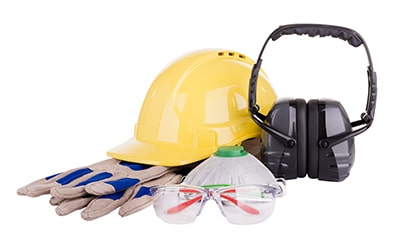When considering workplace safety, what is the first step to developing safety standards for any task? And I mean ANY TASK! June is National Safety Month, and week one’s topic is “Hazard Identification.” If you’re not identifying workplace hazards, your safety program is merely theoretical.
So many workplace accidents occur because our American workforce has a fantastic work ethic. Part of that work ethic is the impulse to “Get ‘er Done!” Efficient, fast completion of the task at hand is part of our American workplace mantra. Unfortunately, many accidents, near misses, injuries, and even workplace fatalities occur due to skipped steps in the process. And often these accidents could have been avoided if the safety program hadn’t skipped an important step. Identifying workplace hazards can help abate hazards associated with the task.


During OSHA training, I will always stress the three accepted forms of hazard abatement. In order of importance, they are:
1. Engineered: This is a step in removing the hazard through systems, including complete ventilation of a flammable or toxic fume, automated light curtains to prevent workers from
approaching hazardous machine operations, and permanent guardrails on a roof edge.
2. Administrative: These hazard abatement steps are usually in the form of temporary guarding or signage, stating that only trained or qualified personnel may enter a hazardous area.
Training is considered an administrative hazard control and is required for many types of tasks.
1. Personal Protective Equipment (PPE): This is OSHA’s last resort in dealing with workers in hazardous situations. PPE can be as simple as a hard hat or as complicated as
respiratory protection or caloric rated clothing. The issue with donning PPE of any kind is that the hazard is still present, and the worker is still exposed to the hazard! Remember that
ALL PPE requires worker training and proper selection of products.

Here is the catch for a Safety Manager. Before you can put any hazard abatement steps in place, the manager must first clearly identify workplace hazards. OSHA commonly calls this process the “Job Hazard Assessment” or JHA. Taking what may be just a few moments to look at a task and the potential hazard exposures, then creating a plan to abate the hazard or protect the worker can save a life, prevent an injury, or prevent damage to equipment. Work permits are a JHA in a formalized logical, step-by-step format.
Again, in nearly every one of my training classes, a conversation between students will exchange a story of an accident or near miss that a person was involved in either at work or home. And nearly every one of these could have been avoided or prevented by taking a moment to identify and abate the hazard. Remember that over 98% of workplace injuries and fatalities could have been prevented!
1. Assess the hazards.
2. vdsv Abate the hazard by engineering. Administration or PPE.
3. Train the worker on the hazard and results of exposure to the danger.
Take that extra moment to practice this while doing tasks at home, too! Be Safe out there!
From identifying workplace hazards to implementing comprehensive safety programs to abate them, we can help! Our OSHA-trained Safety Specialists and Trainers can offer expert advice and make the right recommendations for your facility. Contact us today!